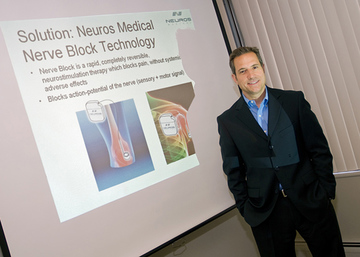It’s been a long time coming, but technology is finally transforming the healthcare industry, enabling functions and services that were all but unimaginable just a few years ago.
Case in point: data.
Here’s what Healthcare IT magazine had to say about health data use recently:
“Next generation quality and safety products will need to support standards-based interoperability and all aspects of electronic clinical quality measures (eCQMs), said Zahid Butt, MD, CEO of quality reporting software vendor Medisolv and vice-chair of the HIMSS Quality, Cost and Patient Safety Committee.
“On the data acquisition side, support will be required for multiple data sources through standards-based interfaces and formats including FHIR and CCDA,” Butt said. “And on the reporting end, robust generation of QRDA I and III outputs should be part of a seamless system where data fluidity within the quality reporting ecosystem is possible.”
Further, as the Centers for Medicare and Medicaid Services and other payers move from process to outcomes measures, the need for more advanced risk adjustment of measure results will lead to the use of clinical variables captured in EHRs for this purpose, Butt contended.
“Pilots of hybrid claims measures already are underway and will increase in the future,” Butt said. “Quality and safety technology products will need to support submission of this type of data and find ways to generate risk-adjusted results using these clinical variables.”
And quality and safety technology systems will need to support the incorporation of patient-reported data either entered directly by patients or generated from their devices as additional data sources for a new generation of patient-reported quality and safety measures, Butt added.”
Those are some lofty goals, but this is just one part of what’s happening in healthcare.
As of today, 99% of all health care delivery in this country happens outside of the office, not when people are face to face with their doctor. Outpatient care management is critical to outcomes. Healthcare systems are starting to realize this, and they are now staffing rooms full of nurses who are monitoring the highest risk patients to address this need.
In this environment, it’s not a stretch to say that technology has the potential to dramatically improve patient satisfaction, patient health and business health all at the same time.
Because, with in-home care, communication is key. Data gathering is critical. And remote delivery — via app, text, phone or other digital platform — is the new linchpin in positive patient outcomes. At the same time, health systems are saving money by pooling resources in back-offices, giving patients more access to their providers and better out-of-office care as a result.
The missing piece of the puzzle is simple enough: how can care managers identify the patients that need their support and thereby connect with the right patient at the right time?
This is the problem at iSelect portfolio company Epharmix is working to solve.
By developing new tools to enable effortless, seamless patient monitoring, Epharmix is creating technologies that send disease-specific information to patients automatically, enabling the existing care managers to serve many more patients and bend the cost curve. The unobtrusive system uses mobile technology to collect patient data while they go about their daily lives, improving patients results while simultaneously reducing workloads for providers.
At the same time, their platform is gathering the data that providers need to improve outcomes and better serve their patients, all while running in the background.
And that’s just one example of the innovative work that iSelect and its investors are supporting.






